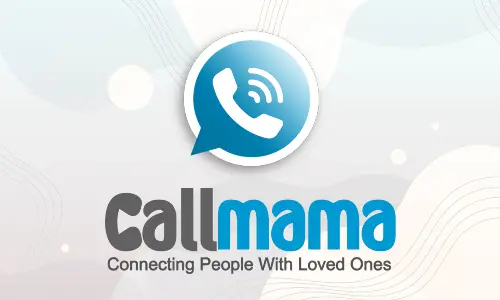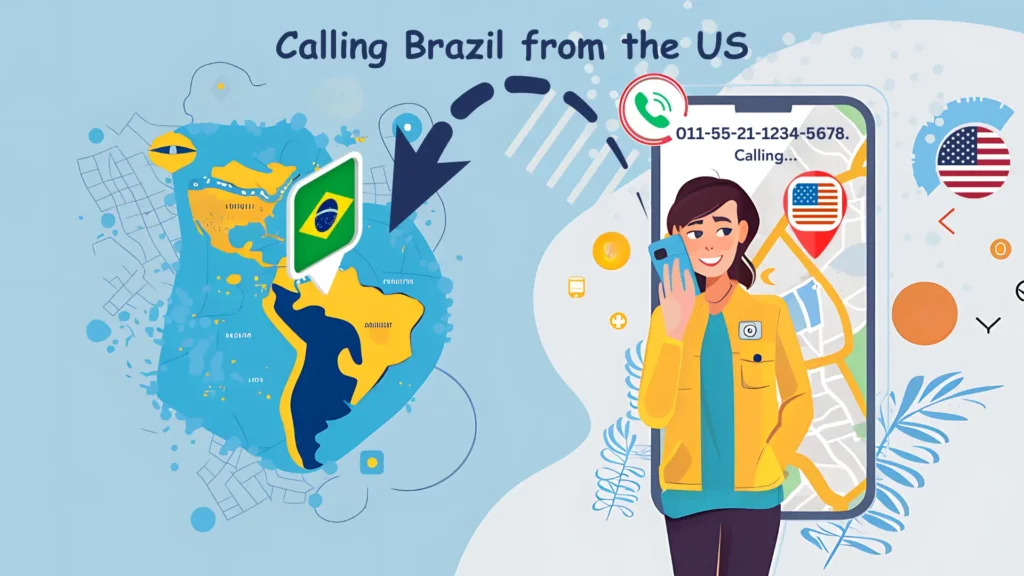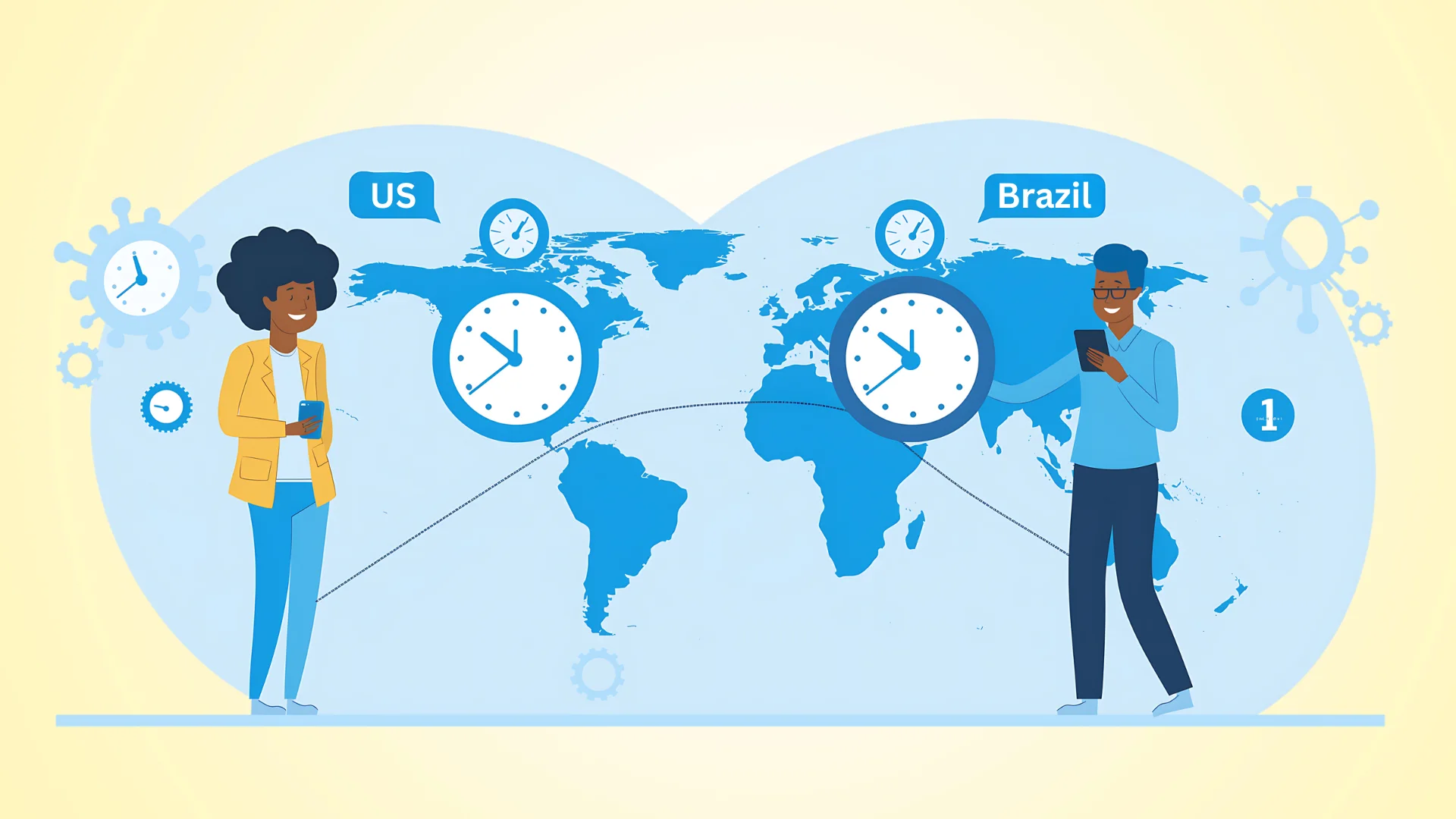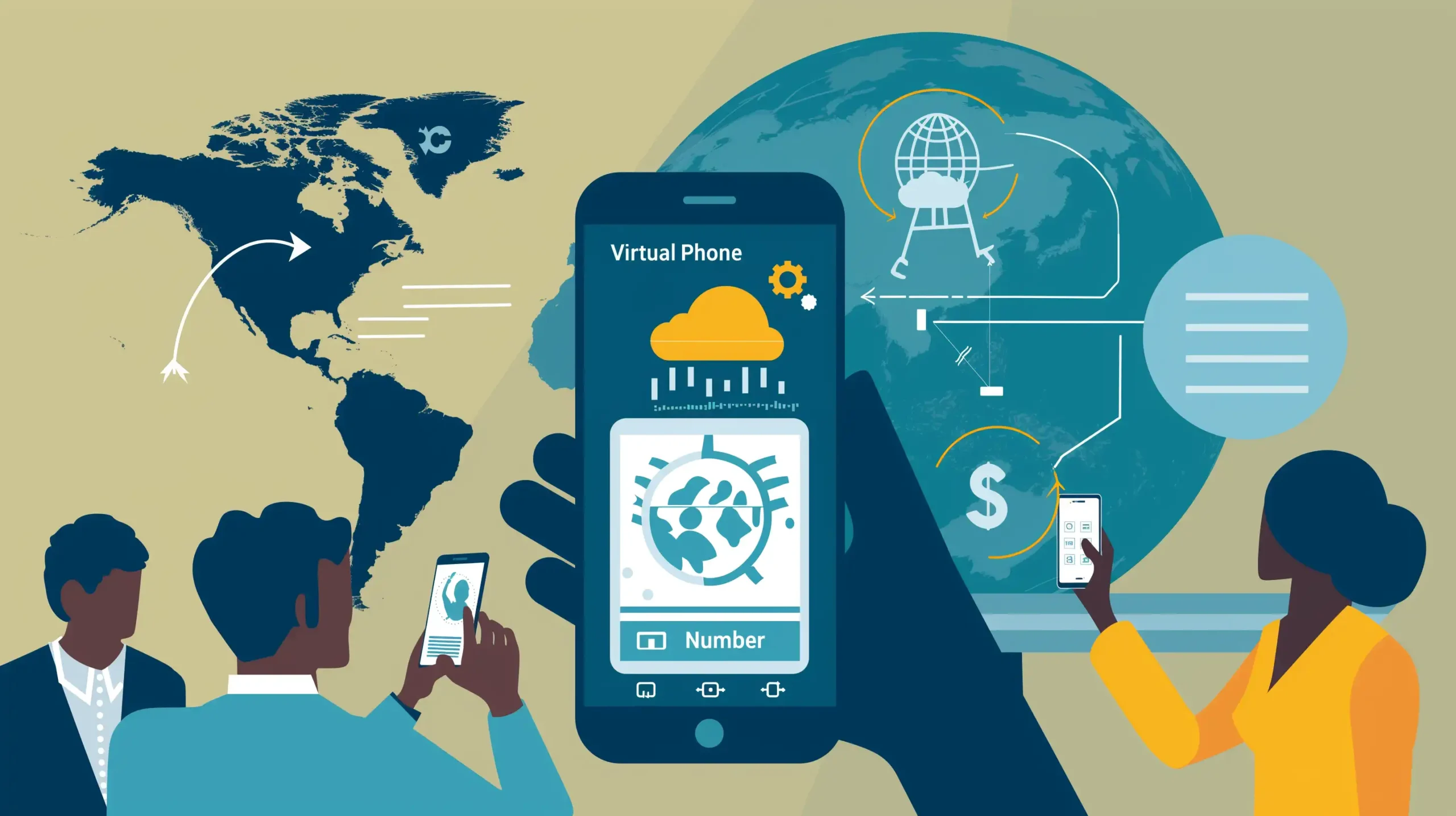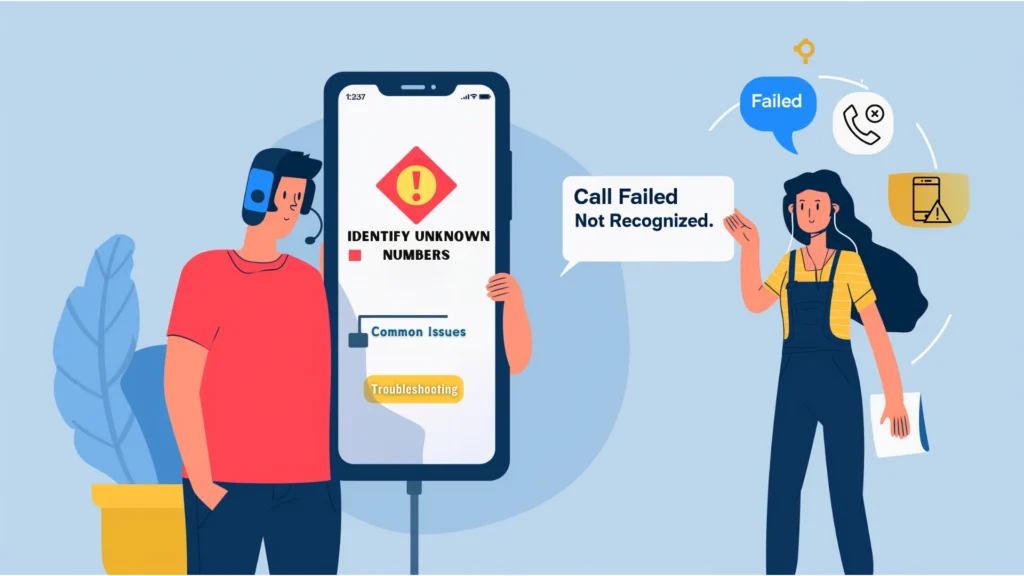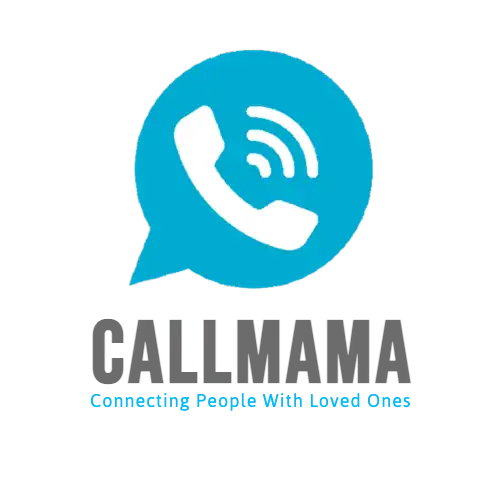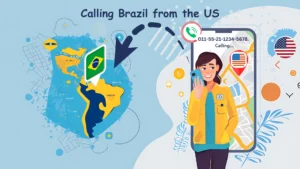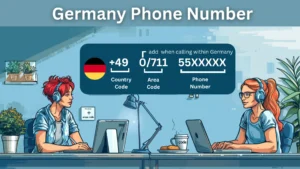Introduction
To tap into Brazil’s growing economy, many US businesses need to establish reliable communication channels. This means understanding how to call Brazil from US. While the process may seem daunting at first, this step-by-step guide will break down the necessary components, including country codes, area codes, and dialing formats. Additionally, we will explore the importance of considering time differences between the two countries and discuss the potential cost savings of using virtual phone numbers as an alternative to traditional international calling plans.
Understanding the Basics of Calling Brazil
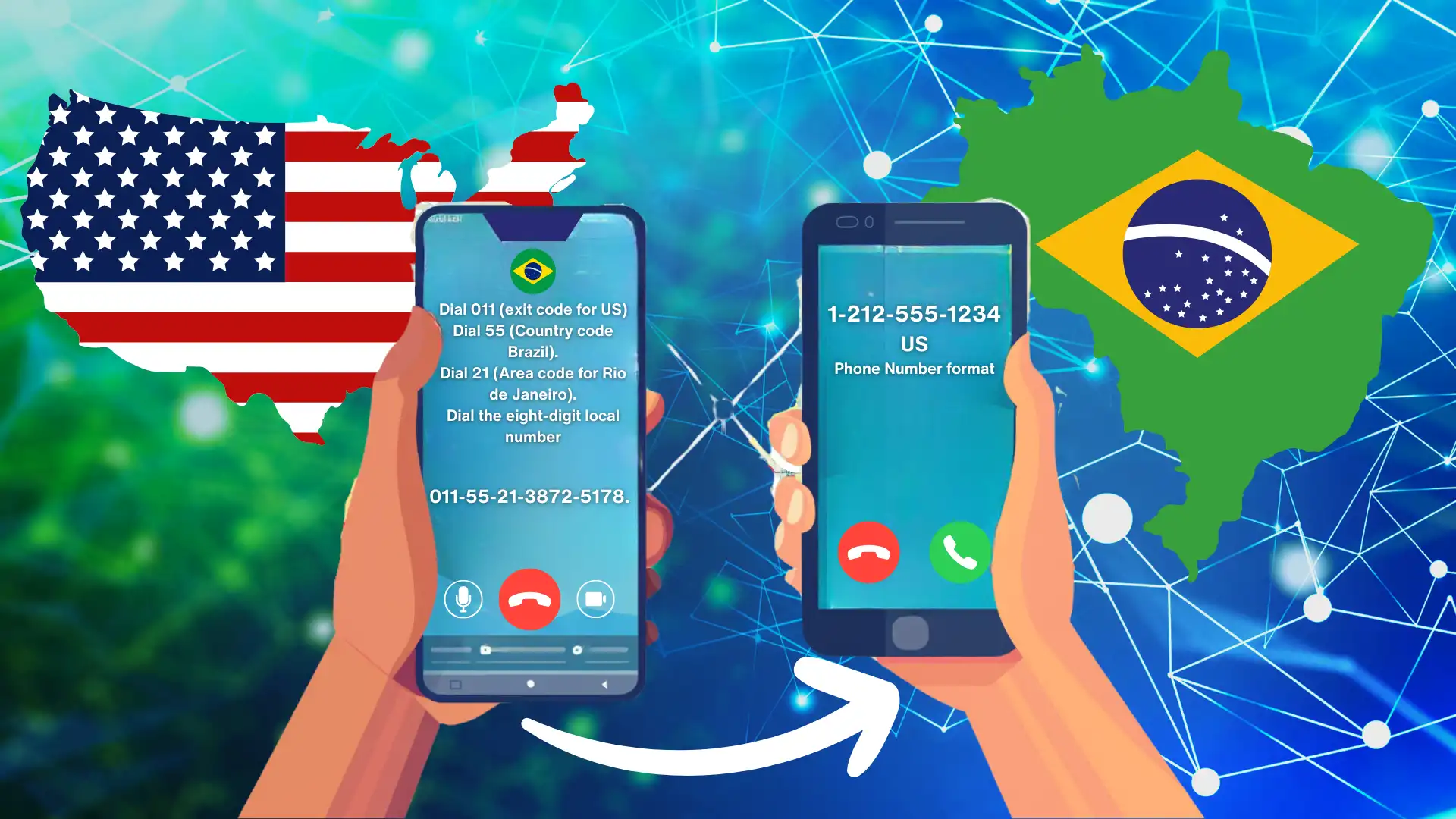
In today’s globalized world, the ability to communicate effectively with contacts in other countries is more important than ever. If you need to reach out to someone in Brazil, whether for personal or business reasons, understanding the basics of international calling is essential. In this section, we’ll break down the components of the international dialing format, explain how it applies to calling Brazil from the United States, and provide a clear example to help you grasp the concept quickly.
The International Dialing Format
When calling Brazil from the United States, it’s essential to understand the international dialing format. This format consists of four main components: the exit code, the country code, the area code, and the local number.
The exit code is the number you dial to indicate that you’re making an international call. In the United States, the exit code is “011”. This code signals to the telephone network that the following digits will be an international number.
Next, you’ll need to dial Brazil’s country code, which is “55”. This code identifies Brazil as the destination country for your call.
After the country code, you’ll need to dial the numerical code specific to the region you’re calling within Brazil. Brazil is divided into different regions, each identified by a unique two or three-digit code. For instance, São Paulo’s regional code is “11”, while Rio de Janeiro’s is “21”.
Finally, you’ll dial the local number, which is typically eight or nine digits long.
Example
To better understand the international dialing format, let’s look at an example. If you’re calling a landline in São Paulo from the United States, you would dial:
011 – 55 – 11 – xxxx-xxxx
In this example, “011” is the exit code, “55” is Brazil’s country code, “11” is the area code for São Paulo, and “xxxx-xxxx” represents the local eight-digit phone number.
It’s important to note that when calling mobile phones in Brazil, the format remains the same, but the regional codes for mobile numbers are different from those used for landlines. Mobile phone codes in Brazil typically start with the digits “9” or “8.
By understanding the components of the international dialing format and how they apply to calling Brazil, you’ll be well-equipped to connect with your Brazilian contacts efficiently.
Decoding Brazilian Area Codes
To make a successful call to Brazil, it’s crucial to understand the country’s regional code system. Regional codes in Brazil are an essential part of the dialing process, as they ensure that your call is directed to the correct location within the country. In this section, we’ll dive into the importance of these codes, explain how they work, and provide a list of the most commonly used codes for major cities and regions.
Area Code Importance
Brazilian area codes play a crucial role in directing calls to the correct region within the country. Brazil is divided into 67 areas, each with its own unique code. These codes are essential for ensuring that calls are routed efficiently and accurately.
When placing a call to Brazil, it’s important to know the regional code of the destination you are trying to reach. Without the correct code, your call may not be connected or may be directed to the wrong location.
It’s also worth noting that regional codes in Brazil can vary in length. Some consist of two digits, while others have three digits. This variation is due to the historical development of the Brazilian telephone system and the need to accommodate the country’s growing population and expanding telecommunications infrastructure.
List of Major Area Codes
Here is a list of some of the most important area codes in Brazil, along with their corresponding cities:
- São Paulo: 11
- Rio de Janeiro: 21
- Brasília: 61
- Belo Horizonte: 31
- Porto Alegre: 51
- Curitiba: 41
- Fortaleza: 85
- Salvador: 71
- Recife: 81
- Manaus: 92
For a more comprehensive list of Brazilian regional codes, you can refer to the Brazilian National Telecommunications Agency (Anatel) website or consult the telephone directory for the specific location you are trying to reach.
It’s important to keep in mind that these codes in Brazil can change over time. As the telecommunications infrastructure expands and the population grows, new codes may be introduced, or existing ones may be modified. Therefore, it’s always a good idea to verify the code before placing a call to ensure that you have the most up-to-date information.
How to Make the Call from the US to Brazil/ Dialing Brazil: Your Step-by-Step Guide
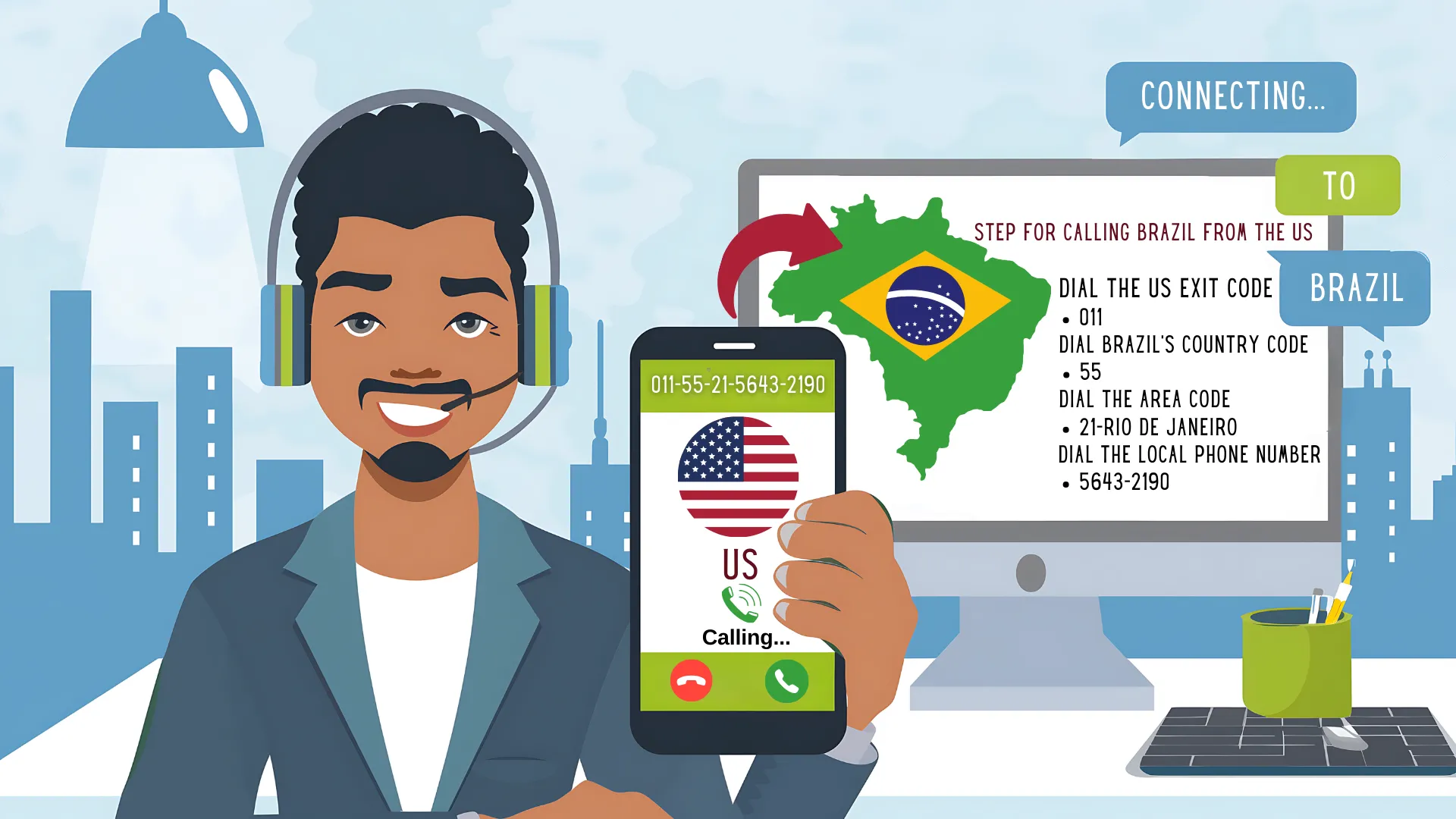
This guide will explain how to make international calls from the United States to Brazil. Now that you’ve familiarized yourself with the international dialing format and the importance of Brazilian area codes, it’s time to put that knowledge into practice. In this section, we’ll provide a step-by-step guide on how to make a call from the United States to Brazil, ensuring that you can confidently connect with your Brazilian contacts. We’ll also discuss the subtle differences between calling landlines and mobile numbers in Brazil, so you can avoid any potential confusion or misdials.
Step-by-Step Instructions
Follow these steps to make a call from the United States to Brazil:
- Begin by dialing the US exit code: 011. This code indicates that you are making an international call from the United States.
- Next, dial Brazil’s country code: 55. This code identifies Brazil as the country you are calling.
- After the country code, dial the area code for the region you are calling. For example, if you are calling São Paulo, you would dial 11.
- Finally, dial the local number, which is typically eight or nine digits long.
For example, if you were calling a landline in São Paulo, the full dialing sequence would be:
011 55 11 xxxx-xxxx
Remember to replace “xxxx-xxxx” with the actual local number you are trying to reach.
Mobile vs. Landline
It’s important to note that there is a slight difference in dialing mobile numbers in Brazil compared to landlines. While the overall format remains the same, Brazilian mobile numbers typically start with the digit “9”.
For example, if you were calling a mobile number in Rio de Janeiro, the full dialing sequence would be:
011 55 21 9xxxx-xxxx
Again, replace “9xxxx-xxxx” with the actual mobile number you are trying to reach.
When in doubt, it’s always best to confirm the number format with your Brazilian contacts to ensure a smooth and successful call.
By following these step-by-step instructions and keeping in mind the distinction between mobile and landline numbers, you’ll be able to confidently make calls from the United States to Brazil.
Best Time to Call Brazil from the US
When calling Brazil from the United States, timing is everything. To ensure that your calls are well-received and productive, it’s essential to consider the time differences between the two countries and understand the typical business hours observed in Brazil. In this section, we’ll explore the key factors to keep in mind when scheduling your calls, including time zone variations and standard working hours, to help you connect with your Brazilian contacts at the most appropriate and convenient times.
Time Zone Considerations
When planning to call Brazil from US, it’s crucial to consider the time difference between the two countries. Brazil spans three time zones, with most of the country observing Brasília Time (BRT), which is UTC-3. However, some western states follow Amazon Time (AMT), which is UTC-4, and a few islands in the Atlantic observe Atlantic Time (FNT), which is UTC-2.
Timing your calls strategically ensures you reach your contacts when they’re available and most likely to have a productive conversation. Knowing the time in Brazil prevents you from leaving unanswered messages or calling during inconvenient hours.
| US Region | Time | Brazil Time (BRT) |
| Eastern Standard Time (EST) | 12 PM (Noon) | 2 PM |
| Central Standard Time (CST) | 11 AM | 1 PM |
| Pacific Standard Time (PST) | 9 AM | 1 PM |
To put this into perspective, when it’s noon in New York (Eastern Standard Time), it’s 1 PM in São Paulo (Brasília Time). When it’s noon in Los Angeles (Pacific Standard Time), it’s 4 PM in São Paulo.
It’s important to keep these time differences in mind when scheduling calls to ensure that you’re reaching out at an appropriate hour. To help with this, you can use an online time zone converter tool, such as TimeAndDate.com or WorldTimeBuddy.com, which allow you to easily compare times across different regions.
Business Hours
In addition to time zone differences, it’s also important to consider standard business hours in Brazil when planning your calls. Business hours can vary slightly depending on the region and industry, but generally, most businesses in Brazil operate from 8:00 AM to 6:00 PM, Monday through Friday.
It’s best to avoid calling outside of these hours unless you have a pre-arranged meeting or are certain that your contact is available. Lunchtime in Brazil typically runs from noon to 2:00 PM, so it’s advisable to avoid calling during this period as well.
If you’re unsure about the best time to call, it’s always a good idea to send an email or message in advance to schedule a convenient time for both parties. This not only ensures that you’re calling at an appropriate hour but also allows your Brazilian contact to prepare for the conversation.
By considering both time zone differences and standard business hours, you can effectively plan your calls to Brazil and maximize your chances of connecting with your contacts successfully.
Using Virtual Phone Numbers for Cost-Effective Calls to Brazil
When it comes to making cost-effective calls to Brazil, virtual phone numbers, also known as Voice over Internet Protocol (VoIP) numbers, have emerged as a game-changing solution for businesses. By harnessing the power of the internet, VoIP technology enables users to make and receive calls at a fraction of the cost of traditional international phone services. In this section, we’ll delve into the world of virtual phone numbers, exploring their benefits, cost-saving potential, and some of the top providers in the market.
Explaining VoIP
Virtual phone numbers, also known as Voice over Internet Protocol (VoIP) numbers, have revolutionized the way businesses communicate internationally. VoIP technology allows users to make and receive calls using an internet connection instead of a traditional phone line.
With a virtual number, you can establish a local presence in Brazil without physically being there. This means that your Brazilian contacts can reach you by dialing local Brazilian telephone numbers, even if you’re based in the United States. Virtual numbers also offer features like call forwarding, voicemail, and call recording, making them a versatile solution for businesses.
Cost Savings
One of the most significant advantages of using virtual phone numbers for phone calls to Brazil is the potential for cost savings. Traditional international phone call can be expensive, especially when made frequently or for extended durations. VoIP calls, on the other hand, are typically much cheaper, as they utilize your existing internet connection rather than costly international phone lines.
Many VoIP providers offer competitive pricing plans tailored to businesses with high volumes of international calls. Some providers even offer unlimited calling to certain countries, including Brazil, for a fixed monthly fee. This predictable pricing structure can help businesses budget more effectively and avoid unexpected charges.
Top Providers
| Provider | Features | Pricing (Example Plans) | Notes |
| My Country Mobile | Virtual phone numbers in over 60 countries, call forwarding, voicemail, SMS | Pay-as-you-go or monthly plans | Specializes in virtual numbers for international calling |
| Skype | Basic voice/video calls, file sharing, SMS | Free (calling plans and add-ons cost extra) | Best known, may be familiar to your Brazilian contacts |
| Google Voice | Integration with Google Apps (Gmail, Calendar, etc.), call forwarding, voicemail transcription | Free (some international calling plans paid) | Ideal if your readers are already heavy Google users |
| Vonage | Advanced features (call recording, CRM integration, etc.), business focus | Basic / Advanced / Premium | May be overkill for individuals, good for larger companies |
| RingCentral | Robust feature set, multiple plans to fit different-sized businesses, excellent call quality | Small Business / Standard / Premium | Well-respected provider, good all-around option |
| 8×8 | Unified communications platform (voice, video, chat), scalable for businesses of all sizes | X Series X2 / X Series X4 / X Series X8 | Strong focus on team communication tools |
When choosing a virtual phone number provider, consider factors such as pricing, call quality, reliability, and customer support. It’s also a good idea to read reviews from other businesses to gauge their experiences with the provider.
By leveraging VoIP technology and virtual phone numbers, businesses can significantly reduce their international calling costs while maintaining a professional presence in Brazil. This cost-effective solution can help businesses streamline their communication processes and foster stronger relationships with their Brazilian partners.
More Ways to Connect and Communicate in Brazil
In addition to traditional phone calls and virtual phone numbers, there are several other ways to connect and communicate with your contacts in Brazil. With the rise of smartphone applications and internet-based communication platforms, staying in touch with your Brazilian partners has become more convenient and cost-effective than ever before. In this section, we’ll explore some popular alternative calling methods and discuss how to navigate potential language barriers to ensure smooth and effective communication.
Alternative Calling Methods
While traditional phone calls and virtual phone numbers are effective ways to communicate with contacts in Brazil, several alternative methods have gained popularity in recent years.
One of the most widely used communication apps in Brazil is WhatsApp. This smartphone application allows users to send text messages, make voice and video calls, and share media files over an internet connection. WhatsApp is a convenient and cost-effective way to stay in touch with Brazilian contacts, as it is free to use and widely adopted throughout the country.
Another popular option is Skype, a well-known platform for voice and video calls, instant messaging, and screen sharing. Skype offers both free and paid services, with the latter providing additional features like group video calls and call recording.
Other communication apps that are commonly used in Brazil include Facebook Messenger, Viber, and Telegram. These apps offer similar features to WhatsApp and Skype, and the choice often comes down to personal preference and the app most widely used by your Brazilian contacts.
Potential Language Barrier
When communicating with Brazilian contacts, it’s important to consider the potential language barrier. While many business professionals in Brazil speak English, it’s not uncommon to encounter individuals who are more comfortable communicating in Portuguese.
If you don’t have a working knowledge of Portuguese, several online translation tools can help bridge the language gap. Google Translate, for example, offers a free web-based translation service that supports Portuguese. You can type, speak, or even take a picture of text to translate it instantly.
Other popular translation tools include Microsoft Translator, DeepL Translator, and iTranslate. These tools can help translate emails, documents, and short conversations. However, it’s important to note that machine translations may not always be perfect, especially for complex or technical topics.
If you anticipate frequent communication with Brazilian contacts and want to ensure clear and accurate exchanges, it may be beneficial to invest in professional translation services or consider hiring a bilingual team member.
By leveraging alternative calling methods and being aware of potential language barriers, you can further enhance your communication with Brazilian contacts and build stronger, more productive relationships.
Making Domestic Calls in Brazil
While the focus of this guide has been on calling Brazil from the United States, it’s also important to understand how to make domestic calls within Brazil, especially if you find yourself traveling or conducting business in the country. In this section, we’ll break down the Brazilian domestic calling format, including carrier codes, area codes, and local numbers, to ensure that you can communicate effectively and efficiently during your time in Brazil.
Domestic Calling Format
If you find yourself in Brazil and need to make domestic calls, it’s important to understand the local dialing format. The Brazilian domestic calling format consists of three main components: the carrier code, the area code, and the local number.
The carrier code is a two-digit number that identifies the telephone service provider. This code is required when making long-distance calls within Brazil. Some common carrier codes include:
- 21 – Embratel
- 31 – Oi
- 41 – TIM
- 15 – Vivo
As discussed earlier, the regional code is a two or three-digit number that identifies the geographical location of the phone number. It’s important to note that you must always include the regional code when dialing a Brazilian number, even if you are calling within the same region.
The local number is the unique identifier for the specific phone line you are trying to reach. Local numbers in Brazil typically consist of eight or nine digits.
To put it all together, the domestic calling format in Brazil is:
0 + (carrier code) + (area code) + (local number)
For example, if you were calling a number in São Paulo (area code 11) from Rio de Janeiro (area code 21) using the Embratel carrier (code 21), you would dial:
0 21 11 xxxx-xxxx
Replace “xxxx-xxxx” with the actual local number you are trying to reach.
It’s important to note that when making local calls within the same region, you can omit the carrier code and simply dial the regional code followed by the local number.
Understanding the domestic calling format in Brazil is essential for both travelers and business professionals who need to make calls within the country. By familiarizing yourself with the carrier codes, regional codes, and local number formats, you can ensure smooth and efficient communication during your time in Brazil.
Troubleshooting Common Issues
Why a Call Might Not Connect
When trying to call Brazil from the United States, you may occasionally encounter issues that prevent your call from connecting. Two common reasons for this are busy signals and incorrect dialing.
Busy signals occur when the phone number you are trying to reach is already in use or when there is high network traffic. If you encounter a busy signal, try calling again later. If the problem persists, it may be worth checking with your Brazilian contact to ensure that you have the correct number and that their phone line is functioning properly.
Incorrect dialing is another common reason for failed calls. When dialing a Brazilian number from the US, make sure to include the exit code (011), the country code (55), and the appropriate area code before the local number. Double-check each digit to ensure accuracy. If you’re still having trouble connecting, verify the number with your contact or consult an online directory to confirm that you have the correct information.
How to Identify Unknown Brazilian Numbers
If you receive a call from an unknown Brazilian number, you can quickly identify it by looking at the beginning of the phone number. All Brazilian phone numbers, when dialed from outside the country, start with the country code “+55” or “55”.
For example, if you see a number in the format “+55 11 xxxx-xxxx” or “55 11 xxxx-xxxx”, you can be sure that it’s a Brazilian number. The “11” in this example represents the regional code for São Paulo.
If you’re unsure about the specific region or city the number belongs to, you can use an online reverse phone lookup tool or consult a list of Brazilian regional codes to determine the origin of the call.
It’s important to exercise caution when receiving calls from unknown numbers, as they may be associated with telemarketing, scams, or other unwanted communications. If you suspect that a call from a Brazilian number is not legitimate, it’s best to avoid answering and block the number if necessary.
By understanding the format of Brazilian phone numbers and being able to identify them quickly, you can better manage your communication and avoid potential issues.
Toll-Free Numbers in Brazil
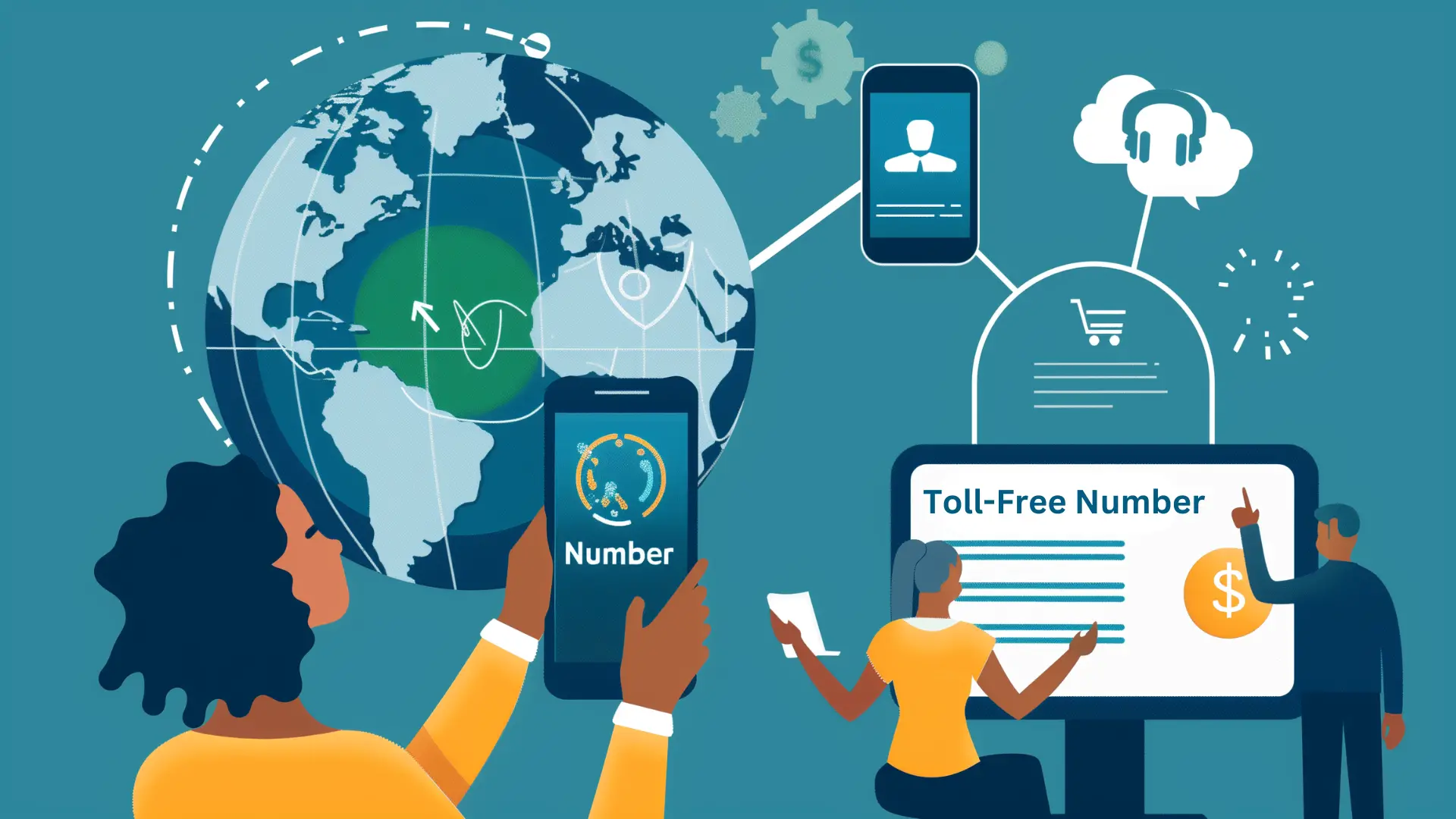
When calling businesses or individuals in Brazil from the United States, you may encounter toll-free numbers that start with prefixes such as 0800 or 0300. While these numbers are indeed toll-free when dialed from within Brazil, they may not always be accessible or free of charge when calling from abroad. In this section, we’ll discuss the potential limitations of Brazilian toll-free numbers and explore alternative ways to contact your Brazilian partners without incurring unexpected costs.
Calling Toll-Free Numbers from Abroad
In the United States, toll-free numbers (often starting with 800, 888, 877, or 866) allow callers to reach businesses or individuals without incurring charges. However, when calling Brazil from the US, it’s important to understand that Brazilian toll-free numbers may not always be free.
Brazilian toll-free numbers typically start with 0800 or 0300. While these numbers are indeed toll-free when dialed from within Brazil, they may not be accessible from outside the country or may incur international calling charges. Let’s explore ways to ensure you can always reach your Brazilian contacts without unexpected costs.
Suggesting Regular Numbers as an Alternative
If you need to contact a Brazilian business or individual who has provided a toll free number, it’s best to check if they also have a regular, non-toll-free number available.
Calling a regular Brazilian number from the US may be more cost-effective than attempting to call a toll-free number, as you can take advantage of international calling plans or virtual phone numbers that offer competitive rates for calls to Brazil.
Additionally, regular numbers are more likely to be accessible from abroad, as they are not subject to the same restrictions as toll-free numbers.
If you’re unsure whether a Brazilian toll free number can be reached from the US, or if you’re looking for an alternative contact method, don’t hesitate to reach out to the business or individual directly. They may be able to provide a regular number or suggest other means of communication, such as email or messaging apps.
By understanding the potential limitations of Brazil toll free number and knowing when to use regular numbers instead, you can avoid unnecessary charges and ensure more reliable communication with your contacts in Brazil. While toll-free numbers can be a great tool, it’s important to be aware of their restrictions for a smooth calling experience.
Brazilian Phone Etiquette
When calling business contacts in Brazil, it’s essential to be aware of the country’s unique phone etiquette and cultural norms. Understanding the appropriate use of formal and informal greetings, as well as the importance of building personal connections, can help you navigate conversations more effectively and create a positive impression with your Brazilian counterparts. In this section, we’ll explore the nuances of Brazilian phone etiquette and provide tips for fostering strong, lasting relationships with your Brazilian business partners.
Formal vs. Informal Greetings
When calling Brazilian contacts, especially in a business context, it’s important to be mindful of phone etiquette and cultural norms. One key aspect to consider is the use of formal and informal greetings.
In Brazilian Portuguese, there are distinct ways of addressing people depending on the level of formality and familiarity. When making initial contact or speaking with someone in a position of authority, it’s best to use formal language and greetings, such as:
- “Bom dia” (Good morning)
- “Boa tarde” (Good afternoon)
- “Boa noite” (Good evening)
- “Senhor” (Sir) or “Senhora” (Ma’am)
As your relationship with your Brazilian contacts develops and becomes more familiar, you may transition to more informal greetings, such as:
- “Oi” (Hi)
- “Olá” (Hello)
- “Tudo bem?” (How are you?)
It’s important to pay attention to the cues and tone used by your Brazilian counterparts and to mirror their level of formality. When in doubt, it’s always safer to err on the side of formality until a more casual rapport has been established.
The Value of Personal Connection
In Brazilian business culture, personal relationships and connections play a significant role in building trust and fostering successful partnerships. When communicating with Brazilian contacts over the phone, it’s important to take the time to engage in small talk and show a genuine interest in their well-being.
Before diving into business matters, it’s common to exchange pleasantries and inquire about the other person’s health, family, or recent activities. This helps to create a warm and friendly atmosphere and demonstrates that you value the relationship beyond purely transactional interactions.
Brazilians also tend to appreciate a more expressive and enthusiastic communication style. Don’t be surprised if your Brazilian contacts speak with animated tones, use expressive language, and even make jokes or share personal anecdotes during your conversations.
While it’s important to maintain professionalism, being open to a more personable and engaging communication style can help you build stronger and more lasting relationships with your Brazilian business partners.
By understanding and adapting to Brazilian phone etiquette and the importance of personal connections, you can navigate business conversations more effectively and create a positive impression with your Brazilian contacts.
Conclusion
In conclusion, calling Brazil from the United States is a straightforward process once you understand the key components and steps involved. To make a successful call, you’ll need to use the correct international dialing format, which includes the exit code (011), the country code for Brazil (55), the appropriate Brazil area code, and the local number. It’s also important to consider factors such as time zone differences, business hours, and language barriers when planning your calls.
While traditional phone calls can be an effective way to reach your Brazilian contacts, exploring alternative communication methods like VoIP services and messaging apps can provide more cost-effective and convenient options. Virtual phone numbers, in particular, offer a range of benefits for businesses that make frequent calls to Brazil, including lower costs, enhanced features, and the ability to establish a local presence in the country.
By familiarizing yourself with the tips and best practices outlined in this guide, you’ll be well-equipped to navigate the process of calling Brazil from the US with confidence. Remember to pay attention to details like the exit code, Brazil country code (55), and the specific Brazil area code you need. Whether you’re making personal or business calls, understanding the nuances of Brazilian phone etiquette and culture can help you foster stronger, more productive relationships with your Brazilian colleagues and connections. So, don’t hesitate to pick up the phone and start connecting with your Brazilian friends, family, or business partners today.
FAQ
What is the international dialing code to call Brazil from the US?
To make an international call from the United States to Brazil, you need to dial the US exit code 011, followed by Brazil’s country code 55, the regional code, and the local number.
Are there any providers that offer unlimited calls to Brazil?
Yes, several VoIP providers like Vonage and RingCentral offer unlimited calling plans to Brazil for a fixed monthly fee. These plans can be cost-effective for businesses that make frequent calls to Brazil.
How can I make cheap international calls to Brazil?
Using virtual phone numbers or VoIP services like Skype, Google Voice, or My Country Mobile can significantly reduce the cost of international calls to Brazil compared to traditional landline or cell phone plans.
Do I need to dial differently for a Brazilian landline number versus a cell phone number?
Yes, there is a slight difference. While the overall dialing format is the same, Brazilian cell phone numbers typically start with the digit “9” before the local number, whereas landline numbers do not.
Can I use my existing cell phone plan to make calls to Brazil?
You can use your existing cell phone plan, but international calling rates can be expensive. It’s often more cost-effective to use a VoIP service or virtual phone number when making frequent calls to Brazil.
What is the dialing code for São Paulo, Brazil?
The regional code for São Paulo is 11. So, when calling a number in São Paulo from the US, you would dial 011 55 11 + the local number.
How can I identify an unknown number calling me from Brazil?
Brazilian phone numbers, when dialed from outside the country, start with the country code +55 or 55. If you see a number in the format “+55 11 xxxx-xxxx” or “55 11 xxxx-xxxx”, it’s a Brazilian number (11 being the regional code for São Paulo).
Are calling cards a good option for calling Brazil from the US?
Calling cards can be an affordable option for making occasional calls to Brazil, but they may not be as cost-effective as virtual phone numbers or VoIP services for frequent calling. Additionally, calling card rates can vary widely.
What are the typical business hours in Brazil?
Most businesses in Brazil operate from 8:00 AM to 6:00 PM, Monday through Friday. It’s best to avoid calling outside of these hours unless you have a pre-arranged meeting or are certain that your contact is available.
Can I use a Brazilian toll-free number to call from the US?
Brazilian toll-free numbers, which typically start with 0800 or 0300, are not always accessible or free of charge when calling from abroad. It’s often better to use a regular Brazilian number or a virtual phone number to avoid unexpected charges.

